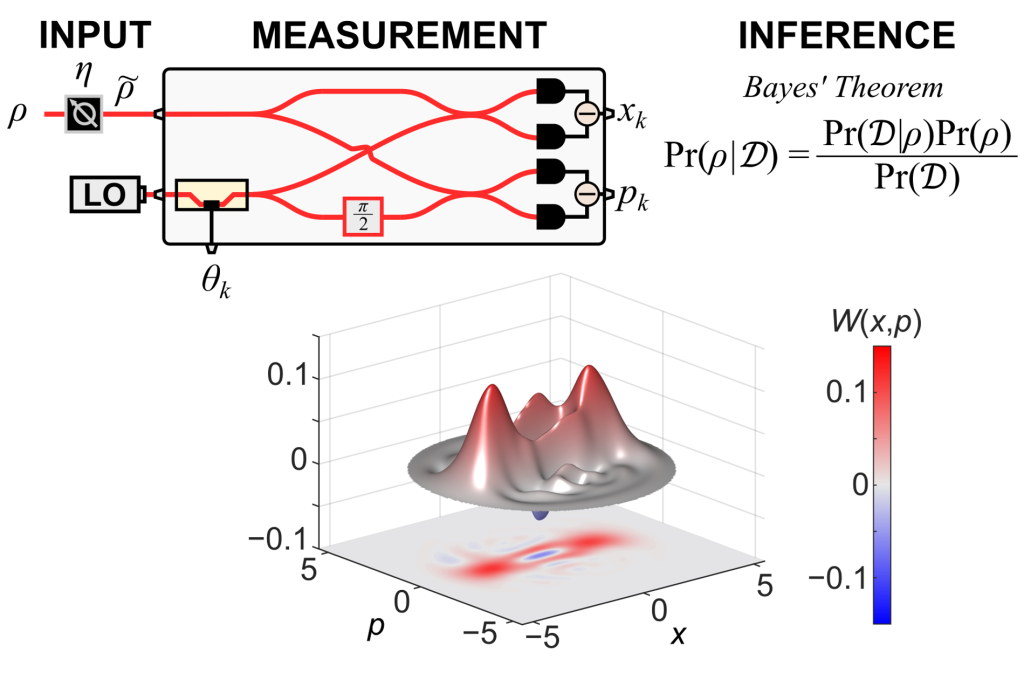
The Science
A team led by ORNL scientists developed a new method to estimate continuous-variable quantum states. This method uses Bayesian inference in a complete quantum state tomography workflow capable of inferring generic continuous-variable states measured by homodyne or heterodyne detection with no assumption of Gaussianity. The approach was demonstrated experimentally with a wide variety of continuous-variable states.
The Impact
- Continuous-variable photonic states require data-efficient characterization for fine-tuning quantum technology such as communications and sensors. Previous efforts were not completely general.
- These general techniques aid understanding of experimental errors in continuous variable all-optical quantum repeaters under development.
- This work lays a foundation for Bayesian estimation of complex continuous-variable quantum states in these emerging quantum photonic platforms.
- Next steps include scaling up the Bayesian inference method for use on larger computer infrastructures and a potential code release.
Summary
Continuous-variable (CV) photonic states are of increasing interest in quantum information science, bolstered by features such as deterministic resource state generation and error correction via bosonic codes. Data-efficient characterization methods will prove critical in the fine-tuning and maturation of such CV quantum technology. Although Bayesian inference offers appealing properties—including uncertainty quantification and optimality in mean-squared error—Bayesian methods have yet to be demonstrated for the tomography of arbitrary CV states. Here we introduce a complete Bayesian quantum state tomography workflow capable of inferring generic CV states measured by homodyne or heterodyne detection, with no assumption of Gaussianity. As examples, we demonstrate our approach on experimental coherent, thermal, and cat state data, obtaining excellent agreement between our Bayesian estimates and theoretical predictions. Our approach lays the groundwork for Bayesian estimation of highly complex CV quantum states in emerging quantum photonic platforms, such as quantum communications networks and sensors.
ASCR Program/Facility
Transparent Optical Quantum Networks for Distributed Science
Funding
DOE, ASCR
Publication for this work
Chapman, Joseph C., Lukens, Joseph M., Qi, Bing, Pooser, Raphael C., and Peters, Nicholas A. “Bayesian Homodyne and Heterodyne Tomography.” Optics Express 30, 15184-15200 (2022). DOI: https://doi.org/10.1364/OE.456597




